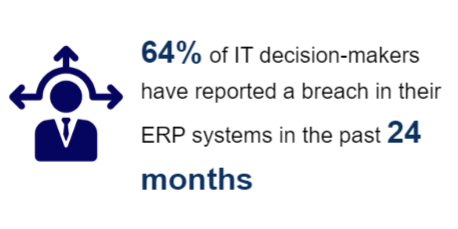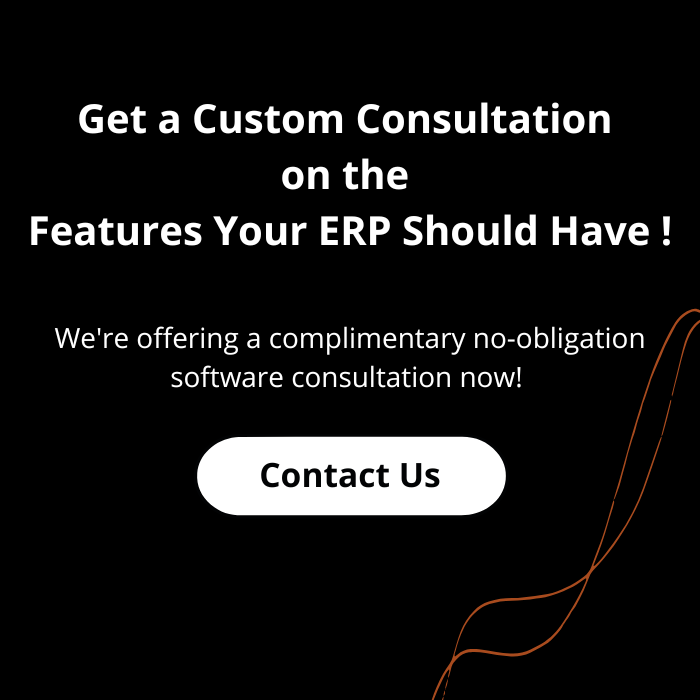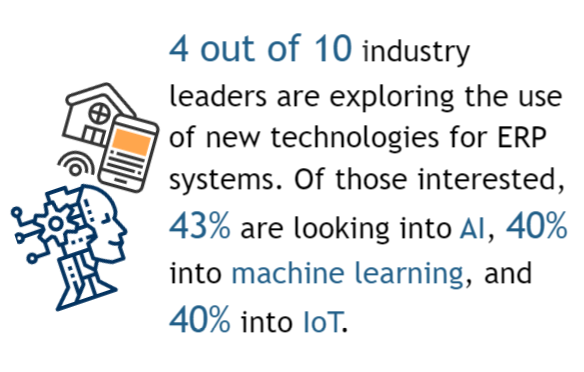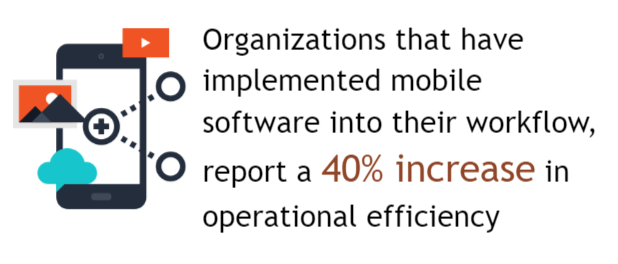Every organization has a process in place to manage employees, customers, purchase orders, invoices, etc and most of the times it is through an Enterprise Resource Planning (ERP) software. Enterprise software is a big name and has gained a lot of popularity for both enterprises as well as SMBs.
But this large-scale software that we call an ERP and is aimed to automate and solve all existing problems of an organization has different features, functionalities and integrates different user roles. This makes it tricky when someone chooses an OTS (Off-the-shelf) ERP or develops a custom ERP. We, in this article, aim to list down the 5 top features that every enterprise application software must-have.
Top Features Of An ERP System:
[1] Security
Remember Equifax? In 2017, one of the three largest consumer credit reporting agencies in the United States, Equifax, announced that its systems had been breached and sensitive personal data of 148 million Americans had been compromised.
The consequences of data breaches are damaging to the longevity of one’s business. You lose reputation and customer trust – everything that you have given your blood and sweat to build. According to Verizon, 69 percent would avoid a company that had suffered a data breach, even if it offered a better deal than competitors.
Thankfully, companies are now more aware than ever of the issues data breaches can cause. An Enterprise SaaS application must always be implemented with a security-first outlook. This means building an ERP infrastructure that is capable to withstand new-age threats and cyber-attacks.

Source :Help Net Security
There are a few effective solutions for enhancing the security of enterprise applications:
[1] Always use the current version of the ERP software. If you use an older version, your ERP is more vulnerable to risk. One can resort to an automatic updater that updates software as soon as some stable update is available.
[2] Access rights must be thought through. A developer doesn’t need to know employee salaries. Also, maintain a log to track changes made to the ERP system.
[3] Let go with Single authentication (login with passwords). They are incredibly easy to hack. Evolve and install two-factor authentications. These decrease the probability of cybercriminals impersonating a user and gaining access to his system.
Also, End-to-end Encryption, vulnerability testing, data deletion, VPC, and VPN are some measures that can help minimize the risks so that your Enterprise SaaS solution can pose no threat to your business continuity.
Also, in light of the high profile data breaches, the General Data Protection Regulation (GDPR) in the EU and the California Consumer Privacy Act (CCPA) in the US, among others, are forcing companies to change their outlook towards enterprise security.
[2] Scalability
Scalability, in simple terms, means the ability of a computing process to be used or produced in a range of capabilities, i.e. the capacity to be changed in size or scale. While choosing an OTS ERP or developing a custom ERP, one thing to always keep in mind is your ERP must be able to keep up with your expanding business. This means an ERP should be able to accommodate an exponential increase in work modules, data, workload, and simultaneous users.
When you choose an OTS ERP and later when your organization grows and you want to add more users to it, your cost will increase significantly. This is how OTS ERPs work – they get you used to their system, which you can’t ditch later on. With custom software development, the architecture is built keeping in mind the future needs of the business. So, when the scalability needs to be amplified, all you need to pay is just a few bucks extra for the increased server capacity and not a penny for the increased no. of users.
Now, companies tend to ignore scalability when choosing or developing ERP for the first time because they don’t think of it as an immediate requirement. This is one mistake everyone should avoid at any cost. Ask yourself and your software vendor questions like – How well-suited is the ERP for large-scale changes and what happens when my business needs to diversify? It’s important to get answers to these questions before you go ahead with the development.
Read more : What To Keep In mind Before Custom Enterprise Software Development?
[3] Integration
An ERP that helps optimize the ROI must integrate and improve business processes to make them efficient and control costs. One of the main appeals of ERP is that it has a centralized data hub for all sorts of information and sync them in real time.
ERP also compromises of various modules that interlink data from all departments and helps automate repetitive and tedious processes. It also enables sharing data insights across departments easier and helps executives make data-driven decisions.
Read more : Enterprise Application Integration
With custom ERP development, discuss integration before the actual development starts. In later cases, if there’s some other module that you are looking to integrate, custom ERPs are flexible enough to integrate those too.
But, with OTS ERPs, third party integrations are often costly and complicated. This is because some other developer who has no idea about the infrastructure and code has to review it and then add and modify the code to integrate it. Also, compatibility issues that this software brings along can make integration difficult in the long run.
Source: The End of Technology Obsolescence, ERP Trends in 2018
[4] Reporting And Dashboards
The prime aim of an Enterprise resource planning (ERP) software is to consolidate the many business processes into a single unified system. So, we can all imagine the massive amount of data it generates.
This data, with the help of proper analytics and reporting, can empower executives to analyze and understand the process efficiencies and make data-driven decisions that can contribute positively to organizational performance.
Enterprise application software not only works with real-time data but it also combine information with pre-existing data to paint a better picture of the company.
Also, by combining the past and present data, an ERP system can create predictive analysis models to guide decision makers. One thing to keep in mind is the reporting module should also have user access controls. Not everyone in the office needs to have access to each and every report.
[5] Mobile Functionality
89 percent of small business employees use their smartphones for work purposes. Being able to access the ERP from mobile means accessing the software 24×7 from anywhere and everywhere and capturing and entering data from wherever they are. So, it basically helps a business store and manage data at any point of time.
Advantages of mobile ERP development are many : Extending the functionalities, real-time data sync, extended collaboration, automatic synchronization and of course, increase in productivity. All
these on the fingertips, without any significant investment on infrastructure or setup.
Also, going mobile means adopting a “always-there-for-you” relationship strategy. Employees can easily communicate with customers irrespective of place and time and also keep them informed in situations of delay or miscommunication.
More and more organizations are signing up for mobile platforms. Mobile ERPs drive visibility across various business departments and speed up the whole automation process, thus amplifying productivity and efficiency.
Also read : Common mistakes of ERP implementation
Get a Complimentary ERP Consultation !
Why Does Developing An ERP Solution With BinaryFolks Make For A Wise Choice?
Driven by ex-engineers from Google, Amazon & Salesforce
101% Value For Money (+1 for Our Complimentary Consultation before You Spend Your 1st Dollar!)
Reviews That You Can Verify!
Safeguarded Business With An NDA
Out-Of-The-Box Innovations
Eye For Details
Questions Galore (Until Your Requirement & Our Understanding are mirror copies!)
Insight-Rich Scope Enhancement
Intense Domain Expertise
Close-knit feedback loop
In Conclusion,
Enterprise SaaS applications ranks pretty high when it comes to comprehensive 360 degree business solutions. Organizations use enterprise software to reduce human errors, automate mundane repetitive tasks, save time, increase efficiency in business processes, generate actionable information from Analytics etc. But, with the variety of choices available, it is pretty obvious for someone to get overwhelmed while choosing or developing one. We wanted to make this decision easier by providing a list of top 5 ERP features and functions that every Enterprise Application Software must have. If you have more queries on ERP development, feel free to reach us here.






